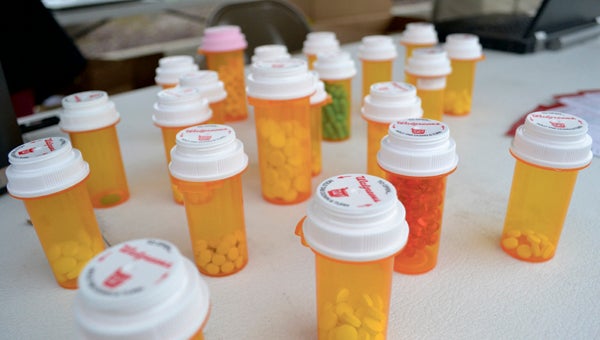A legal start to addiction
Published 5:12 pm Monday, August 24, 2015
In the past several years, the United States has seen an unprecedented rise in heroin addiction. It spans age, sex, race, socioeconomic status and geographical location. It has hit small, rural towns and big cities. In 2013, more than 8,000 Americans died of heroin-related overdoses — three times as many as died in 2010, according to the Centers of Disease Control.
In the past several years, the United States has seen an unprecedented rise in prescription opioid addiction. It spans age, sex, race, socioeconomic status and geographical location. It has hit small, rural towns and big cities. In the span of 25 years, the number of prescription opioid overdoses quadrupled to 22,767 prescription drug overdose deaths in the U.S. in 2013, also according to the Centers of Disease Control.
It’s not a coincidence. In 1991, the number of prescriptions for opioids dispensed by U.S. retail pharmacies was 76 million; in 2013, that number had nearly tripled to 207 million.
“Although opioid medications effectively treat acute pain and help relieve chronic pain for some patients, their addiction risk presents a dilemma for healthcare providers who seek to relieve suffering while preventing drug abuse and addiction,” Dr. Nora D. Volkow told the U.S. Senate Caucus on International Narcotics Control last year.
And it is a dilemma, because it’s estimated that more than 100 million Americans live in chronic pain. It’s known that even used as prescribed and not abused in any way, a small percentage of people will become addicted. The more one takes, the more tolerance one has for the drug and more trouble finding the sense of well-being and pleasure that they create. They become harder to get because of measures preventing people from seeing multiple doctors to get more pills to feed their addictions. An addict gets caught doctor shopping and the supply is cut off; the pills get too expensive. That’s when heroin comes into play — it does the same job, and at that point, it’s cheaper and more accessible.
There is research being done to create painkillers less addictive than the opioid set. It can’t come fast enough for places like Marion, Ohio, a town of 37,000 people that experiences an average of a heroin overdose a day—56 overdoses and five deaths between April and June of this year, when a heavily fentanyl-laced batch came to town.
It goes without saying that opioids should only be used as prescribed and only when needed. What does need to be said is if a person has a supply of prescription opioids, get rid of them as soon as they are no longer needed. A “just in case” supply can be far too tempting for the addicted.
Any unused or unwanted pills can be dropped off at the Beaufort County Sheriff’s Office drop box in the lobby of the Market Street, Washington, office during business hours — no questions asked.





